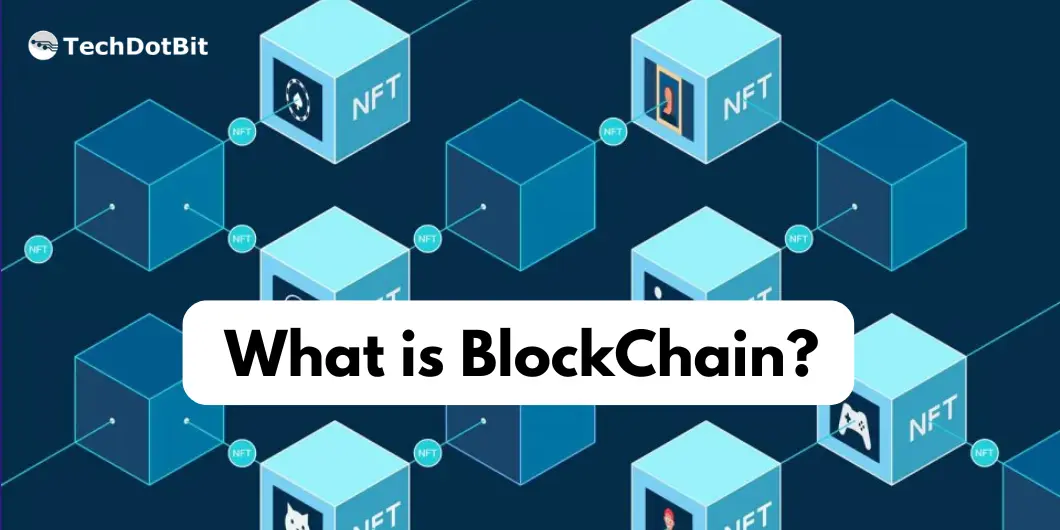Software-as-a-service (SaaS) cloud-based applications are growing fast worldwide, with companies like Dropbox, Google, and Slack leading the market. According to Gartner’s forecast, the revenue from SaaS applications is expected to increase from $94.8 billion in (2019) to $143.7 billion by the end of 2022.
So, what do these companies have in common? What makes them stand out from others? It’s easy — they all use a multi-tenant architecture for their SaaS applications.
In this article, we’ll discuss different aspects of multi-tenant SaaS architecture and understand why it is essential for today’s SaaS businesses.
So, without further ado, let’s dive in!
What is multi-tenant architecture?
Multi-tenant is a business structure in which multiple customers use a single instance of the software and its supporting information. Each customer is called a tenant and shares the same database and application.
Multi-tenant SaaS architectures are found in both private and public cloud environments, allowing data of each tenant to be separated from each other.
For instance, in a multi-tenant public cloud, multiple users are hosted using the same servers in a hosted environment. Each user is offered a separate and ideally secure space within those servers to store data.
In this architecture, the customers are unaware of other data as it is stored exclusively. This means the tenants are invisible to each other.
Most of the subscription-based cloud SaaS solutions are built on multi-tenant architecture. Some multi-tenant architecture examples include:
- Website platforms (Shopify, Wix)
- Corporate and single-user email apps (Gmail, Yahoo)
- Cloud storage services (Dropbox, Google Drive)
- Communication apps (Trello, Slack)
In the next section, we will compare single-tenant architecture and multi-tenant architecture to understand which one is better.
Single-tenant vs multi-tenant architectures

Single-tenant is an architecture where every customer has a separate software instance, dedicated server, set of computing resources, and supporting infrastructure. The tenant’s data is inaccessible to other users, but they have to manually upgrade and maintain their environment.
In other words, a single-tenant SaaS architecture is just like a private house in the suburbs. It’s self-sufficient and secure, but the price of the infrastructure and maintenance quickly goes through the roof.
On the other hand, multi-tenant architecture provides services to multiple clients from the same resources. It allows clients to run large databases and sophisticated apps immediately while spending less money. Moreover, tenants don’t have to maintain the infrastructure, thereby saving storage, hardware, and CPU costs.
Multi-tenancy is like an apartment in a residential building where tenants share the same communal facilities and security systems. But each tenant has access to their respective apartments so their privacy is guaranteed within their apartment. Also, the infrastructure is cheaper and easier to manage.
Moving forward, we will discuss why organizations prefer multi-tenant architecture over single-tenant architecture. So, let’s get started!
Top benefits of multi-tenant SaaS architecture
So, why should you favor a multi-tenancy architecture for your SaaS product ideas? Let’s look at the key advantages of this architecture to explain:

Multi-tenant SaaS (Software as a Service) architecture offers several benefits for both providers and users. Here are some of the top advantages:
1. Cost-Effective:
— Shared Infrastructure: Multi-tenancy allows multiple users or organizations to share the same infrastructure and resources, reducing the overall cost of hardware, maintenance, and operations.
— Economies of Scale: SaaS providers can leverage economies of scale, passing on cost savings to customers through lower subscription fees.
2. Scalability:
— Easy Scaling: Multi-tenant architecture can easily accommodate a growing number of users or tenants without significant changes to the underlying infrastructure.
— Resource Efficiency: Resources are allocated dynamically based on demand, ensuring efficient use of hardware and minimizing waste.
3. Rapid Deployment:
— Quick Onboarding: Users can quickly sign up and start using the software without the need for complex installations or configurations.
— No Maintenance: Customers don’t have to worry about software updates, patches, or maintenance, as the provider handles these tasks centrally.
4. Accessibility:
— Anywhere, Anytime Access: SaaS applications are accessible via the internet from any device with a web browser, promoting remote work and mobility.
— Cross-Platform Compatibility: Multi-tenant SaaS works across various operating systems and devices, ensuring broad accessibility.
5. Continuous Updates and Improvements:
— Continuous Delivery: Providers can deliver updates and new features seamlessly to all users, ensuring everyone has access to the latest version.
— Competitive Advantage: Users benefit from ongoing improvements without the need for manual updates or additional costs.
6. Security:
— Centralized Security: Providers can invest in robust security measures, including data encryption, firewalls, and access controls, to protect all tenants’ data.
— Compliance: SaaS providers often adhere to industry-specific compliance standards, helping users meet regulatory requirements.
7. Collaboration:
— Shared Data and Features: Multi-tenant SaaS often includes collaboration features that facilitate communication and data sharing among users within the same organization or tenant.
— Real-time Updates: Collaboration tools enable real-time collaboration, enhancing productivity and teamwork.
8. Reduced IT Burden:
— Minimal IT Infrastructure: Users can focus on their core business functions rather than managing complex IT infrastructure.
— Lower IT Staffing Needs: With reduced maintenance requirements, organizations can allocate IT resources more efficiently.
9. Pay-as-You-Go Model:
— Predictable Costs: SaaS typically operates on a subscription-based model, allowing organizations to budget predictably for software expenses.
— Flexible Scaling: Users can adjust their subscriptions based on their needs, avoiding overprovisioning or underutilization of resources.
10. Disaster Recovery:
— Built-in Redundancy: Multi-tenant SaaS providers often have redundancy and backup systems in place, ensuring data recovery in case of hardware failures or disasters.
11. Global Reach:
— Worldwide Access: SaaS applications are accessible globally, making them suitable for businesses with international operations.
— Multilingual Support: Many SaaS providers offer multilingual interfaces to accommodate users from different regions.
Easy maintenance and upgrades
Organizations can update software for multiple customers at once in multi-tenant environments. Instead of managing every tenant separately, they can roll out new updates and features to the codebase or central application, applying the changes to all users. Also, maintaining the app is quite easy and cost-effective.
Shared data centers
In a multi-tenant architecture, a vendor is not required to create a new data center for new users. Customers use a common infrastructure that removes the need to increase the number of data centers for each tenant.
Fast scaling of resources
Implementing a multi-tenant SaaS framework allows you to create multiple scaling strategies for your business without infrastructure implications because users share databases and software instances. Your app can redistribute resources instantly as users adjust their storage size, change their subscription model, or add services.
Efficient use of computing resources
With a multi-tenant architecture, customers get enough compute power and storage to handle their workloads. Whereas, in a single-tenancy model, every tenant uses separate databases, which leads to degraded performance or underutilized resources.
Multi-tenancy allows sharing of CPUs, storage, and memory between thousands of customers.
In addition, you can use load balancers and tier-based isolation strategies to allocate available resources, ensuring optimal performance for every client.
Customization and third-party integration
Companies can make their SaaS application architecture highly customizable using APIs. As a result, all your customers can enjoy third-party integration without waiting for you to deploy on their infrastructure.
The above-mentioned benefits make multi-tenancy SaaS architecture an excellent choice for startups and enterprises with tiered userbases. Plus, this model is a great choice for businesses that want a manageable and scalable application.
Challenges of implementing multi-tenant architecture
While multi-tenancy architecture comes with several benefits, you’re still bound to face a few challenges during development. Below are a few limitations of implementing such architecture for your SaaS applications:
Resource strain
In shared cloud environments, users can monopolize memory, storage, and CPU, leaving other customers with fewer resources. This leads to resource strain or the so-called ‘noisy neighbor’ effect.
Organizations can prevent such situations by building a SaaS application with scalable architecture and load balancing mechanisms.
More downtime
Multi-tenant SaaS architecture relies on large and complex databases that result in hardware as well as software downtime on a regular basis. This can make your business seem less reliable and cause availability issues for customers.
In-app disturbances
Since databases are shared within a multi-tenant environment, there’s a higher chance that your workflow can be disturbed. For example, if hardware and software issues occur within the server, it can lead to an outage for customers as well.
Well, now that we have seen both the benefits as well as challenges associated with multi-tenant architecture, it’s time to look into the steps to ensure effective multi-tenant SaaS app development.
Best practices for multi-tenant SaaS app development
In this section, we will look at some SaaS architecture best practices that might help in multi-tenant SaaS app development:
Ensure compliance
Your app should adhere to local laws, security standards, and industry-specific regulations. Making secure and compliant software requires industry-specific knowledge and expertise. This is why you should consult a reliable SaaS app development company at the early stages of development.
Allow customization and third-party apps
Users are looking to personalize their experience with their usual business tools. For example, your clients might want to integrate payment gateways, additional security tools, and customer portals. Therefore, you must design your app in a way that allows third-party integration through APIs.
Localize the tenant experience
Localization is important for multi-tenant SaaS apps targeting a global audience. Your app’s user interface (UI) should include features like multiple languages, time zones, and metrics (for example, temperatures).
Set up customer support
Support is an important part of a SaaS application architecture. Therefore, you should plan customer support services much earlier. Consider creating a trustworthy and reliable customer portal with self-service features, a knowledge base, and a support ticket management system.
Final thoughts!
The multi-tenancy architecture is the optimal choice for subscription-based SaaS applications. Compared to single-tenancy architectures, multi-tenant architectures are cost-effective and faster to scale.
Hopefully, the strategies and information mentioned above can help you build a multi-tenant SaaS app even faster.
But if you need more assistance, it’s advisable to consult a trusted SaaS app development company. The experts will offer top-notch multi-tenant SaaS solutions and services in the form of consulting, implementation, and support and make the app development journey easier for you.








